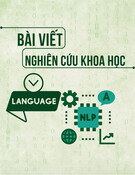
TNU Journal of Science and Technology 230(04): 290 - 298
http://jst.tnu.edu.vn 290 Email: jst@tnu.edu.vn
AN INVESTIGATION INTO CLASSROOM INTERACTION
IN ENGLISH SPEAKING CLASSES AT A HIGH SCHOOL
Duong Duc Minh1
*
, Nguyen Tuan Anh2
1TNU - International School, 2Luong Phu High School, Thai Nguyen province
ARTICLE INFO ABSTRACT
Received:
13/02/2025
This study examines classroom interaction in English-
speaking lessons
at a high school, with primary objectives of (i) identifying the
predominant interaction patterns and (ii) analyzing how these
interactions occur in relation to teacher talk
and student spoken output.
The study involved four English teachers and 150 students across
multiple classes. Observations and audio recordings were used to
collect data for the present study. Data analysis, conducted using the
Flanders’ interaction analysis categories system
, identified five
predominant types of classroom interaction: teacher-
whole class,
teacher-student, student-teacher, student-student, and student-
group.
The findings indicate that teacher talk dominated classroom discourse,
with
teachers primarily engaged in lecturing, questioning, providing
directions, and offering criticisms or justifications of authority. The
results suggest that to mitigate teacher-
centered instruction, English
teachers should increase the use of indirect teac
hing strategies to foster
a more balanced interaction dynamic. Additionally, enhancing student
autonomy and providing more frequent praise and encouragement can
further facilitate learner participation and engagement. These insights
underscore the need for
pedagogical adjustments that prioritize
communicative competence and active student involvement in English
language learning.
Revised:
17/04/2025
Published:
19/04/2025
KEYWORDS
Classroom interaction
Flanders’ interaction analysis
categories system
High school
Student talk
Teacher talk
NGHIÊN CỨU VỀ TƯƠNG TÁC TRÊN LỚP TRONG GIỜ HỌC NÓI
TIẾNG ANH TẠI MỘT TRƯỜNG TRUNG HỌC PHỔ THÔNG
Dương Đức Minh
1
, Nguyễn Tuấn Anh
2
1Khoa Quốc tế - Đại học Thái Nguyên, 2Trường THPT Lương Phú, tỉnh Thái Nguyên
THÔNG TIN BÀI BÁO TÓM TẮT
Ngày nhậ
n bài:
13/02/2025
Nghiên cứu này tìm hiểu các loại hình tương tác trong lớp học trong giờ
học nói tiếng Anh tại một trường trung học phổ thông, với hai mụ
c tiêu
chính: (i) xác định các loại hình tương tác phổ biến nhấ
t và (ii) phân
tích cách thức các tương tác này diễn ra trong mối quan hệ giữa lờ
i nói
của giáo viên và khả năng nói của học sinh. Nghiên cứu được thực hiệ
n
với sự tham gia của bốn giáo viên tiếng Anh và 150 học sinh. Dữ liệ
u
thu được thông qua quan sát lớp học và băng ghi âm sau đó đượ
c phân
tích theo Hệ thống phân tích tương tác của Flanders, qua đó xác đị
nh
được năm loại hình tương tác chính. Kết quả nghiên cứu cũng cho thấ
y
giáo viên chiếm ưu thế trong quá trình tương tác, chủ yếu tậ
p trung vào
giảng bài, đặt câu hỏi, đưa ra hướng dẫn, và phê bình. Từ những kết quả
trên, có thể suy ra rằng giáo viên tiếng Anh cần tăng cườ
ng phương
pháp giảng dạy gián tiếp, bên cạnh đó, việc gia tăng lời khen ngợ
i và
động viên học sinh có thể thúc đẩy sự tham gia tích cự
c hơn trong quá
trình
h
ọ
c ti
ế
ng Anh
.
Ngày hoàn thiệ
n:
17/04/2025
Ngày đăng:
19/04/2025
TỪ KHÓA
Tương tác trong lớp
Hệ thống phân tích tương tác
của Flanders
Trường trung học phổ thông
Học sinh nói
Giáo viên nói
DOI: https://doi.org/10.34238/tnu-jst.12043
* Corresponding author. Email: minhdd@tnu.edu.vn

TNU Journal of Science and Technology 230(04): 290 - 298
http://jst.tnu.edu.vn 291 Email: jst@tnu.edu.vn
1. Introduction
Classroom interaction (CI) is a critical component for developing spoken language skills,
particularly in English. It plays a multifaceted role in language classrooms by increasing students’
linguistic resources [1], strengthening social relationships [2], enhancing communication skills, and
building confidence [2], [3]. Given the significant benefits CI brings to students’ English-
speaking performance, it has become a focal point for researchers, educators, and linguists in
understanding its impact on language acquisition.
CI is not only vital but also a challenging element in improving English language skills,
particularly speaking, which Khadidja [4] describes as a complex skill requiring consistent effort
over time. Effective speaking development necessitates frequent practice and exposure,
especially in language classrooms where real-life communicative situations can be simulated.
Brown [5] underscores that interaction is the essence of communication. However, several
barriers - such as self-consciousness, shyness, and a lack of ideas - often hinder students’
participation, leading to poor oral performance. For learners in non-English-speaking settings,
experiencing authentic communicative interactions is essential for developing fluency, accuracy,
and confidence in English communication. In this context, CI becomes an indispensable strategy
for teaching and learning. CI manifests in various forms, supporting diverse teaching and
learning dynamics. Thomas [6], as cited in [7], identifies eight types of CI in language
classrooms. For this study, six primary types of interaction are emphasized: (1) Teacher speaking
to the whole class; (2) Teacher speaking to an individual student with the rest of the class as
hearers; (3) Student speaking to teacher; (4) Student speaking to student; (5) Student speaking to
group members; and (6) Student speaking to the whole class.
CI is an essential factor in producing comprehensible output and facilitating language practice
for students. According to [8], speaking activities in classrooms help learners manage their
linguistic limitations through negotiation of meaning, such as slowing speech, clarifying ideas, or
seeking agreement. This process enhances students' ability to produce comprehensible output and
fosters their language development.
Besides, Allwright and Bailey [9] stated that through CI, the plan produces outcomes (input,
practice opportunities, and receptivity). The teacher must plan what he intends to teach (syllabus,
method, and atmosphere). Therefore, CI plays a vital part in teaching learning process. It can be
seen from Figure 1.
Figure 1. The relation between plans and outcomes
CI also enables students to practice language skills in simulated real-life situations. Rivers [1]
(as cited in [5]) highlights that CI allows students to use language meaningfully and take risks in
producing the target language. Through interaction, teachers provide feedback and praise, which
motivate students and reinforce their learning [5]. Furthermore, Nurmasitah [10] notes that
interaction exposes learners to language input beyond their current competence, enabling
meaningful communication. In this study, CI is a critical measure of success in English-speaking
classes. Observing CI provides insights into how opportunities for student spoken output and
teacher feedback influence the development of speaking skills.

TNU Journal of Science and Technology 230(04): 290 - 298
http://jst.tnu.edu.vn 292 Email: jst@tnu.edu.vn
Communication, as defined by [11], is the exchange of ideas, feelings, or information.
Effective communication involves ensuring that the intended message is understood. Lynch [12]
notes that communication encompasses not only factual information but also opinions and
emotions. In speaking classes, CI occurs as students and teachers interact to share information,
clarify misunderstandings, and discuss problems. EFL/ESL classrooms often vary in their
interaction styles. While some are teacher-centered, focusing on lectures and drills [13], others
emphasize student involvement through active participation in discussions and activities. Lynch
[12] highlights that while listening and reading provide valuable experience, active speaking
practice with feedback is essential for faster progress. Speaking activities may include
conversations, repetition drills, or role-playing. In this research, CI is observed throughout
English-speaking classes, including teacher-student and student-student interactions. Teachers act
as facilitators, delivering information and guiding discussions, while students participate by
asking questions, responding, and collaborating with peers. This dynamic interaction is crucial
for enhancing students' oral performance.
Verbal interaction between teachers and students is a cornerstone of effective learning.
Teacher talk (TT) serves as a primary tool for instruction, providing input, directions, and
feedback essential for student learning [14]. TT involves activities such as giving explanations,
asking questions, and managing classroom behavior ([15], as cited in [16]). Interactive strategies
like repetition, prompting, and prodding foster a collaborative learning environment.
Student talk (STT), on the other hand, involves students’ responses to TT or their independent
contributions. STT allows students to express ideas, initiate topics, and share opinions, promoting
active engagement and knowledge co-construction ([17], as cited in [18]). Through both TT and
STT, students develop linguistic and communicative competence.
Teachers play a variety of roles in EFL classrooms, including controller, assessor, prompter,
and resource. Harmer [19] outlines these roles, emphasizing their importance in fostering CI and
enhancing student performance. Teachers’ ability to balance these roles is crucial for maximizing
CI and encouraging student participation. This study investigates how teachers’ roles influence
interaction patterns and student engagement.
Despite its recognized significance, the identification of primary types of classroom
interaction in speaking classes, as well as the examination of the relationship between teacher
talk, student talk, and their respective characteristics, remains a considerable challenge for
educators. Several studies have explored classroom interaction using Flanders’ interaction
analysis categories system (FIACS). For instance, Inamullah [20] observed differences in
interaction patterns across secondary and tertiary levels, while Nugroho [21] analyzed teacher
and student talk time in senior high school EFL classes. These studies highlight the importance of
CI in fostering student engagement and improving learning outcomes.
In this study, FIACS is applied to analyze interaction in high school English-speaking classes.
The findings contribute to understanding the correlation between teacher and student interaction
and their impact on language learning outcomes.
2. Methodology
This research seeks to apply the FIACS technique to examine the CI in English speaking
classes. The objectives are to identify the predominant types of CI occurring during these lessons
and to analyze the interrelationship between teacher talk, student talk, and their respective
characteristics. Specifically, the study aims to answer the following research questions:
1. What are the predominant types of classroom interaction between teachers and students in
English-speaking classes?
2. What are the characteristics of classroom interaction in those English-speaking classes?
This study adopts a descriptive research design aimed at describing classroom interaction
phenomena and their characteristics. The focus is on understanding what classroom interaction

TNU Journal of Science and Technology 230(04): 290 - 298
http://jst.tnu.edu.vn 293 Email: jst@tnu.edu.vn
entails, rather than investigating how or why it occurs. Data collection was primarily qualitative,
relying on observation tally sheets and audio recordings. Quantitative analysis methods, such as
calculating frequencies, percentages, and averages, were applied to analyze relationships among
types of classroom interaction.
The primary data collection tool was an observation tally sheet, designed to record verbal
interactions between teachers and students during lessons. Both the researcher and an assistant
used this tool simultaneously to ensure data reliability. Before using the tally sheets, both
observers were trained on the study of [20] whose interaction analysis guidelines to master the
coding system. Pearson product moment correlation was over 0.99, indicating very strong
reliability between the two observers’ findings. Flanders interaction analysis was used to code
and analyze verbal interactions systematically. Additionally, audio recordings of the lessons were
used to complement observations. These recordings provided a detailed record of verbal
interactions, enabling more accurate coding of teacher talk and student talk.
3. Results and Discussion
3.1. Types of classroom interaction
The observations revealed six main types of classroom interaction in English-speaking lessons
including, teacher-whole class (T ↔ WH), teacher-student (T ↔ ST), student-teacher (ST → T),
student-student (ST ↔ ST), student-group (ST ↔ STs), and student-whole class (ST ↔ WH).
Across eight lessons, the most common types of CI were teacher speaking to the whole class (T
↔ WH) and teacher speaking to an individual student (T ↔ ST).
a. Summary of classroom interaction by Teacher A
The results from Teacher A’s classes are summarized in Figure 2.
18.30%
38.65%
32.28%
27.74%
11.11%
9.82%
10.76%
8.39%
11.76%
15.34%
12.03%
10.97%
10.46%
2.45%
3.80%
9.03%
1.96%
14.72%
3.80% 9.03%
40%
50%
60%
70%
80%
90%
100%
Figure 2. Summary of classroom interactions in each lesson by teacher A
The bar chart in Figure 2 summarizes classroom interactions in each lesson by Teacher A,
highlighting a predominantly teacher-centered approach. Teacher speaking to the whole class (T
↔ WH) was the most frequent interaction, peaking at 46.41% in Lesson 1 and remaining
dominant across all lessons. Teacher speaking to an individual student (T ↔ ST) was the second
most common, reaching 40.76% in Lesson 7, indicating a strong reliance on teacher-directed
questioning. Student participation (ST ↔ T, ST ↔ ST, ST ↔ STs, ST ↔ WH) was relatively

TNU Journal of Science and Technology 230(04): 290 - 298
http://jst.tnu.edu.vn 294 Email: jst@tnu.edu.vn
low, with student-student interactions (ST ↔ ST) peaking at only 10.97% in Lesson 4. Student
speaking to the whole class (ST ↔ WH) was the least frequent, never exceeding 4.69%. These
findings suggest that Teacher A’s lessons were heavily teacher-led, with limited opportunities for
student-initiated discussions and peer interactions. Table 1 shows the summary of classroom
interaction by teacher A.
Table 1. Summary of classroom interaction by teacher A
Coded CI Total Quantity Percentage (%)
T
↔ WH
54
34.92%
T
↔ ST
46.5
29.17%
ST
↔ T
17.625
11.12%
ST
↔ ST
14.625
9.48%
ST
↔ STs
13.875
9.42%
ST
↔ WH
9.125
5.89%
b. Summary of classroom interaction by Teacher B
The results from Teacher B’s classes are summarized below:
48.41%
17.47%
39.62% 32.48% 42.24% 31.76% 25.53% 34.96%
15.92%
40.96%
30.19%
28.66%
28.57% 39.19% 38.30% 15.45%
8.92% 12.65%
11.95%
10.19%
11.80% 6.76% 18.09%
6.50%
14.65% 13.25% 10.06%
8.92%
7.45% 9.46% 3.72%
4.88%
7.64% 3.61%
5.03%
10.19%
6.83% 5.41% 11.17%
30.89%
4.46% 12.05% 3.14% 9.55% 3.11% 7.43% 3.19% 7.32%
0%
10%
20%
30%
40%
50%
60%
70%
80%
90%
100%
Lesson 1 Lesson 2 Lesson 3 Lesson 4 Lesson 5 Lesson 6 Lesson 7 Lesson 8
T
WH
T
ST
ST
T
ST
ST
ST
STs
ST
WH
Figure 3. Summary of Classroom Interactions in each lesson by teacher B
The bar chart in Figure 3 illustrates classroom interactions in each lesson by Teacher B,
showing a teacher-centered approach with teacher speaking to the whole class (T ↔ WH) as the
most dominant interaction, ranging from 17.47% in Lesson 2 to 48.41% in Lesson 1. Teacher
speaking to an individual student (T ↔ ST) was the second most common interaction, reaching
40.96% in Lesson 2 and remaining consistently high. Student participation (ST ↔ T, ST ↔ ST,
ST ↔ STs, ST ↔ WH) was relatively low, with student-student interaction (ST ↔ ST) peaking
at 14.65% in Lesson 1. Student speaking to the whole class (ST ↔ WH) was the least frequent,
not exceeding 7.32%. These findings indicate that Teacher B’s lessons were largely teacher-led,
with limited opportunities for independent student engagement and peer interaction. Summary of
classroom interaction by teacher B is shown in Table 2.
Table 2. Summary of classroom interaction by teacher B
Coded CI Total Quantity Percentage (%)
T
↔ WH
53.125
34.06%
T
↔ ST
47.625
29.66%
ST
↔ T
17.625
10.86%
ST
↔ ST
14.25
9.05%
ST
↔ STs
15
10.10%
ST
↔ WH
9.75
6.28%
In sum, teacher speaking to the whole class was the most dominant type of classroom interaction,
accounting for approximately 35% of interactions, reflecting a teacher-centered approach common in

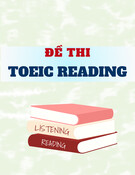

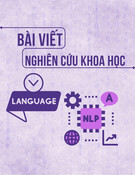





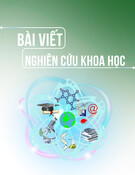

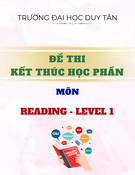
![Đề cương môn Tiếng Anh 1 [Chuẩn Nhất/Mới Nhất]](https://cdn.tailieu.vn/images/document/thumbnail/2025/20251130/cubabep141@gmail.com/135x160/51711764555685.jpg)


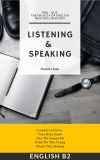
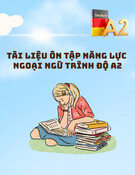




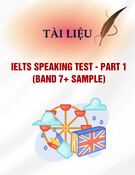

![Mẫu thư Tiếng Anh: Tài liệu [Mô tả chi tiết hơn về loại tài liệu hoặc mục đích sử dụng]](https://cdn.tailieu.vn/images/document/thumbnail/2025/20250814/vinhsannguyenphuc@gmail.com/135x160/71321755225259.jpg)
